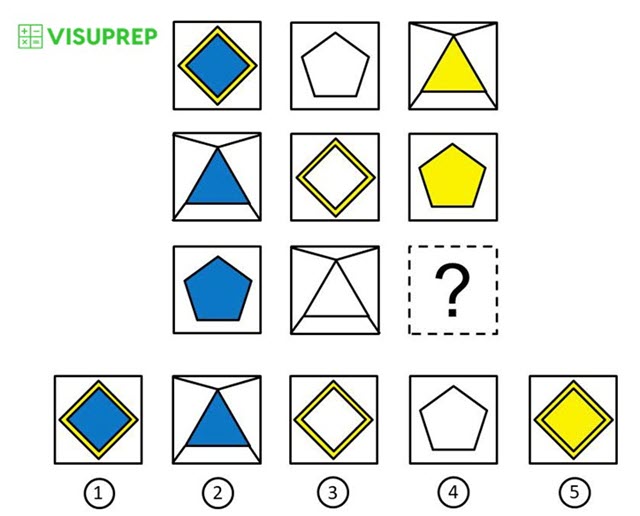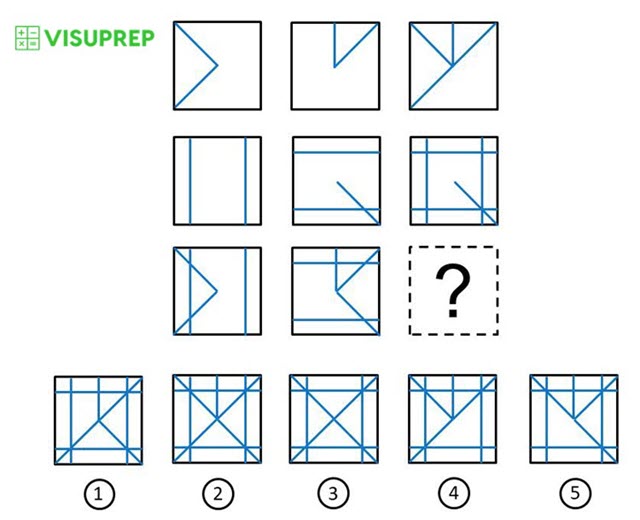New York City Gifted & Talented Grade 2 Level C Online Test Preparation
Visuprep provides NYC G&T (New York City Gifted & Talented) test prep software to help prepare for the NYC G&T Level C Grade 2 tests (taken by second graders for entry into third grade Gifted & Talented programs). Each NYC G&T prep test costs $25 for one year’s membership, and contains 78 questions. To help with test preparation and practice for grade 2 NYC G&T tests, each prep test comes with explanations for (in addition to answers to) the test questions.
What is the NYC G&T (New York City Gifted & Talented) Test?
The New York City Gifted & Talented Test is a test that is used to identify gifted and talented children for entrance into school accelerated, advanced, gifted and talented programs. The NYC G&T test consists of two parts – a Naglieri Nonverbal Ability Test (NNAT) and the verbal questions from the OLSAT (Otis-Lennon School Ability Test).
The NNAT (Naglieri Nonverbal Ability Test) is a cognitive ability test that is a nonverbal measure of general ability. The NNAT test is a nonverbal test (requiring minimal use of language and instructions) which makes use of abstract shapes and designs, and is therefore a good culturally neutral assessment of general ability.
The OLSAT (Otis-Lennon School Ability Test) is an aptitude test for grades K-12 that measures reasoning and problem solving skills. The OLSAT test contains questions that measure verbal and nonverbal ability, but the NYC G&T only uses the questions from the OLSAT that measure verbal ability (i.e. questions on following directions, aural reasoning and arithmetic reasoning).
Visuprep NYC G&T Level C Grade 2 Test Demo
Note that you can expand (enlarge) the size of the text and images in the NYC G&T prep test demo software on a mobile or tablet by using pinch-to-zoom. Pinch-to-zoom is when you place your thumb and a finger close together on the screen and move them apart without lifting them from the screen. To reduce the size of the text and images in the NYC G&T prep test demo software, place your thumb and a finger a little distance apart on the screen and move them toward each other without lifting them from the screen.
The New York City Gifted & Talented Test consists of two parts – a Naglieri Nonverbal Ability Test (NNAT) and the verbal questions from the OLSAT (Otis-Lennon School Ability Test).
The tests in our NYC G&T Grade 2 products are presented in two formats – learning mode (with answers and explanations immediately after each question), and test mode (with answers and explanations at the end of the test).
The demos below are learning mode demos (with answers immediately after each question).
NYC G&T NNAT Level C (Grade 2) Demo
NYC G&T OLSAT Level C (Grade 2) Demo
A pdf file of the sample questions in the NYC G&T prep test demo, together with the answers, is available by clicking on the link below:
Format of the NYC Gifted & Talented Grade 2 Level C Test
The New York City Gifted & Talented Level C Grade 2 test is an untimed 78 question test.
There are 48 nonverbal NNAT questions, and 30 verbal OLSAT questions.
There are four types of nonverbal NNAT questions – pattern completion, reasoning by analogy, serial reasoning, and spatial visualization. There are three types of verbal OLSAT questions – following directions, aural reasoning, and arithmetic reasoning.
Visuprep’s NYC G&T Grade 2 Level C Tests Use Our NNAT3 Format
Visuprep’s NYC G&T Grade 2 tests use our NNAT3 rather than our NNAT2 format for the NNAT questions. The only difference between Visuprep’s NNAT2 and NNAT3 tests is in the colors used to create questions. Both tests use the colors black, white, yellow and blue, but for the fifth color, NNAT2 uses a light blue color whereas NNAT3 uses green.
NYC G&T Grade 2 Level C NNAT Test Sample Questions


The pattern is symmetrical. You can see that box 1 on the top row is the same as box 3 on the top row and box 1 in the first column is the same as box 3 in the first column, box 1 on the second row is the same as box 3 on the second row and box 1 in the second column is the same as box 3 in the second column, and therefore box 1 on the bottom row will be the same as box 3 on the bottom row and box 1 in the third column will be the same as box 3 in the third column. Therefore the answer is (3).
Joining the boxes together in your mind helps visualize the complete pattern more easily. Joining the boxes together gives the complete pattern shown below.



Looking at each row, the second box is the result of taking the first box and making the yellow circles blue and the blue circles white. The third box is the result of taking the second box, making the middle circle yellow and removing the bottom left and top right circles.
Therefore the answer will be the result of taking the second box on the bottom row, making the middle circle yellow and removing the bottom left and top right circles. Therefore the answer is (4).


Looking at each row, each box contains one of three different shapes – a rhombus with a yellow frame, a pentagon or a triangle with lines from its corners to the corners of the box. The color of each shape is different and must be either blue, white or yellow. Note that the rhombus changes color between rows, but its frame remains unchanged in color i.e. it remains yellow.
Looking at row 3, a pentagon and a triangle shape have already been used, so the answer must be the third shape i.e. a rhombus with a yellow frame. The color of the pentagon on the third row is blue and the color of the triangle on the third row is white, so the colors blue and white have already been used on the third row which means that the answer must be the third color i.e. yellow. Therefore the answer must be a yellow rhombus with a yellow frame i.e. (5).


Looking at the boxes in each row, the contents of boxes 1 and 2 are combined to form the contents of box 3. Alternatively, you could look at each column and say that the contents of boxes 1 and 2 are combined to form the contents of box 3.
Looking at the third row, we can say that the answer is the combination of boxes 1 and 2 in row 3 i.e. the answer is (2).
NYC G&T Grade 2 Level C OLSAT Test Sample Questions
Choose the answer that shows a porcupine.


A chef gave instructions on how to set a table as shown in the leftmost picture below. Mike tried to follow the chef’s instructions but made some mistakes when setting the table. To fix his mistakes, Mike needed to switch two objects and move another object. Which one of the four pictures on the right shows how Mike set the table before he fixed it?


Looking at picture (B), switching the fork and the spoon, and then moving the bread to the right gives the same table setting as the chef’s setting (which is the leftmost picture). Therefore (B) must be the way Mike set the table before fixing it.
Note that the answer cannot be (A), because to get to the chef’s setting from picture (A), all that is needed is to switch the fork and the spoon i.e. there is no movement of another object required.
The answer cannot be (C), because to get to the chef’s setting from picture (C) requires switching the wine and the bread and switching the fork and the spoon i.e. it requires two switches rather than one switch and one movement of another object.
The answer cannot be (D), because to get to the chef’s setting from picture (D) requires two movements of objects i.e. moving the wine to the left and moving the bread to the right, and it requires switching the knife and the spoon, so it requires one switch and two movements of objects rather than one switch and one movement of objects.
Count how many apples are in the first picture. If 2 children take 3 apples each, how many apples would be left?


There are 8 apples in the first picture. If 2 children take 3 apples each, then altogether the 2 children take 6 apples. Thertefore the number of apples left will be 8 – 6 i.e. 2 apples.
Naglieri Nonverbal Ability Test®, NNAT®-2 and NNAT®3 are registered trademarks of Pearson Education Inc. or its affiliate(s), or their licensors. Visuteach and its website, visuprep.com, are not affiliated with nor authorized, sponsored or otherwise approved by Pearson Education Inc. or its affiliates.
Otis-Lennon School Ability Test® Eighth Edition and OLSAT 8® are registered trademarks of Pearson Education Inc. or its affiliate(s), or their licensors. Visuteach and its website, visuprep.com, are not affiliated with nor authorized, sponsored or otherwise approved by Pearson Education Inc. or its affiliates.

